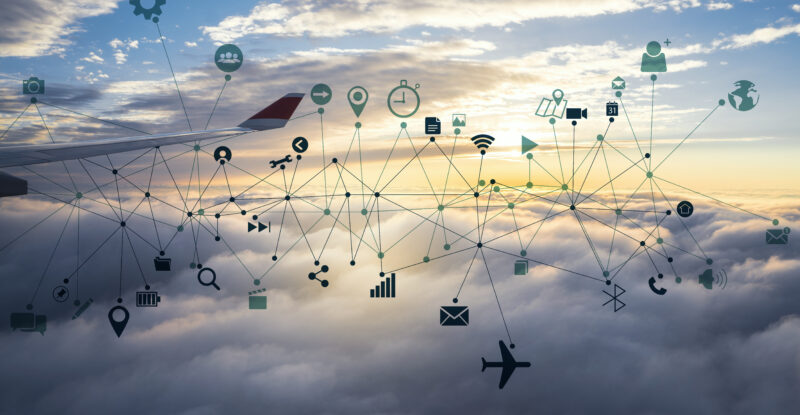Should airlines offer free inflight connectivity in premium cabins? This question seems to arise time and again on social media, most especially since a handful of carriers now offer free Wi-Fi as a benefit to first and business class passengers, and some have even extended it to all passengers.
In May Saudia became the first airline in the Middle East to offer free Wi-Fi to premium passengers via vouchers. As of 15 July, the airline began sending an auto Wi-Fi code to premium passengers’ mobile/email just after they receive their boarding pass. Not surprisingly, the carrier has since seen a dramatic surge in usage of its OnAir-supplied L-band connectivity service, as well as an increase in data consumption. However, Saudia has no qualms about footing the bill. The airline is “subsidizing the service, knowing that it is a needed service” and this “is a running course each month”, says Saudia VP marketing & product management Abdulrahman Al Fahad.
Aer Lingus, whose Airbus A330s are fitted with Panasonic Avionics’ Ku-band connectivity solution, also offers Wi-Fi vouchers to premium passengers. “Business class passengers surf for free,” it boasts.
Panasonic Ku customer Turkish Airlines is a proponent of the free Wi-Fi model. Additionally, low-cost, all-economy carriers Norwegian and Nok Air have embraced this approach, with Nok Air CEO Patee Sarasin telling Total Telecom that Wi-Fi “started off being charged for [by airlines] because it was new, but it eventually became such a commodity that people just expect it”. Wi-Fi on Norwegian is supported by Ku connectivity hardware from Global Eagle Entertainment, which will also support the launch of Nok Air’s free service. JetBlue Airways, meanwhile, is looking to continue offering a “free” element of high-speed Internet when its ViaSat Ka-band-powered connectivity solution comes off beta testing.
But at present, “free for all” carriers are an exception to the general rule. Just as airport Wi-Fi systems suffer capacity constraints when service is offered for free, so too can inflight connectivity service degrade when everyone on board can access it for free. Plus, many airlines expect to monetize connectivity. “Perhaps airlines from a marketing perspective will offer their elite customers free email or something like that, but there is a real cost to enabling it, and until the airlines can get really good at driving ancillary revenue, the cost has to be met,” suggests a long-time industry consultant.
Lufthansa, which has nearly completed installs of Panasonic Ku across its entire long-haul fleet, doesn’t see an impetus to offering free Wi-Fi to premium classes since so many other carriers also still charge for the service, including US operators flying internationally. The airline that gives Wi-Fi away essentially ends up being the one to lose out. And it doesn’t seem like passengers mind that much anyway, suggests Nils Haupt, Lufthansa’s director of corporate communications for the Americas.
According to Gogo VP of airline partnerships, pricing, and distribution Dave Bijur, the reality is that passengers in first class are the ones most likely to pay for the service. Gogo controls the pricing of its service, which is offered over an air-to-ground network in the United States, and via Ku-band satellites on Delta’s international aircraft and Japan Airlines’ domestic aircraft. So far, all passengers pay for the service, unless Gogo is running a special promotion.
But let’s say airlines do decide to actually gift their premium class passengers with Gogo Wi-Fi. Is it possible? The Chicago-based company is already working with partners on a way for passengers to connect to the network with credentials outside a Gogo account so that airlines can offer free access in real time (e.g., rewarding a passenger that has achieved status).
Gogo does not anticipate a loss of revenue in the event the model changes, which begs the question of whether the cost of providing “free” connectivity will simply be built into the price of the ticket.
Interspersed with the business types scrolling through PowerPoints (or journalists filing stories), there are those who’d rather be unreachable in-flight. “I always look at flight time as my chance to be away from distractions—email…etc.—and actually focus on just one or two things, be it a report I’m writing or a crossword puzzle…” writes Chris Sonzogni, the outreach director for Young America.
Is it fair to indirectly charge these passengers for an amenity they might not even want?
Featured image credited to istock.com/ozgurdonmaz










